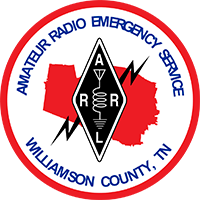From Phil Sherrod, W4PHS:
I just got home from a meeting with two other Winlink developers. We spent most of one day discussing the Hamnet MESH network, and I had a chance to learn a lot and play with the Hamnet software.
Hamnet is a broadband MESH network providing speeds about the same as a Comcast cable connection (or much faster if you use more expensive equipment). Since it is a MESH network, as long as a node has a connection to any other node, it can reach anything in the network. You can simultaneously stream feeds from multiple 802.11 video cameras, do high-speed file transfers, set up an iGate, use VoIP phones or do anything else you could do through a TCP/IP LAN. You can access the Internet through the mesh if one of the nodes has an Internet connection (optional). It would be very cheap to set up Hamnet drop kits as long as we can get the coverage across the county. You only need a Technician license to be part of it.
One of my Winlink colleagues helped set up a country-wide Hamnet network in Chester Co, PA that provides broadband coverage for nearly all locations in the country. They have a hilly county like Williamson.
Texas is big into Hamnet – especially around Dallas and Austin which have almost complete coverage. Hamnet is spreading like wildfire across Europe and developing countries. It now covers many countries in Europe. We are working with them to set up an interconnection with Winlink through the Wien CMS.
The only equipment we need are a collection of Linksys WRT54G routers of versions 1.1 through 4 or the WRT54GL (Linux); I just ordered several WRT54G on eBay for about $25 each.
Note that you don’t have to have a computer at a node. Just plug in a WRT54G, and it’s instantly part of the network, and it can provide coverage to other stations further away. No on-site software configuration is needed. If you put a WRT54G on a hill with a battery, you would have an instant relay across the hill and coverage for anyone with a LOS location around the hill.
Here’s the main page for the Hamnet organization: http://www.broadband-hamnet.org/
An even better device than the W4T54G is the Ubiquiti Bullet BM2HP or one of their other devices:
http://www.ubnt.com/airmax/bulletm/
The Bullet is available in several frequencies, but I think we should stick with 2.4 GHz to be compatible with other 802.11 devices except for long-haul links where 800 MHz would have better penetration through foliage.
For long-haul, line-of-sight links (10-20 miles), you can use 20+ dB antennas that only cost about $10, such as:
http://www.ebay.com/itm/2-4GHz-20dBi-Yagi-802-11b-g-WiFi-Antenna-RP-SMA-WLAN-/190836223385?pt=US_Directional_Network_Antennas&hash=item2c6eb9ad99
The Fall TEMA/AuxComm exercise is Oct. 10-11, and it’s being held at the Independence High School in Franklin. My plan is to set up and demonstrate a Hamnet covering the exercise.
If you want to get going with Hamnet, here are the steps:
Register your callsign at http://www.broadband-hamnet.org/component/user/?task=register
Read this page to find out which versions of the Linksys WRT54G are compatible with Hamnet. http://www.broadband-hamnet.org/section-blog/37-hardware-faqs/101-supported-hardware.html
Find or buy a suitable WRT54G, and load the Hamnet firmware into it: http://www.broadband-hamnet.org/software-download.html
You may want to consider replacing the antennas on the WRT54G with a mag mount or better. Note that at 2.4 GHz, feed line loss is severe.
If you want to set up an outdoor installation or build a good drop-kit for field operation, this is the recommended equipment including a Ubiquiti Bullet that mounts outside and requires only a CAT5 cable to run inside:
http://www.amazon.com/Ubiquiti-BULLET-M2-HP-Outdoor-802-11-M2HP/dp/B002SYS22E/ref=pd_bxgy_pc_text_y
http://www.amazon.com/Ubiquiti-Poe-15-Power-Over-Ethernet/dp/B002R7JPGE/ref=pd_cp_pc_1
http://www.amazon.com/Engenius-Outdoor-High-Antenna-EAG-2408/dp/B000VIA4CA/ref=pd_bxgy_pc_text_z
Total cost: $107.41
Phil
W4PHS
